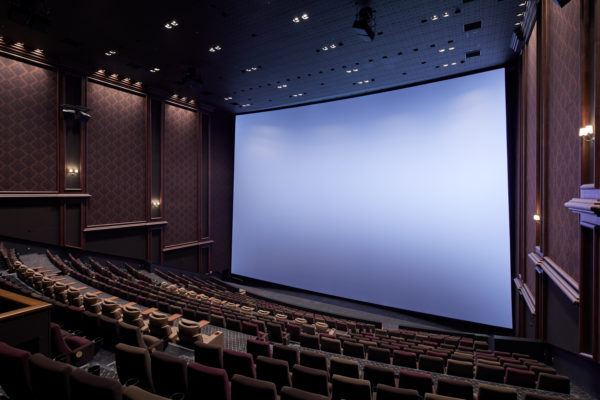Imax CEO Richard Gelfond, in the company’s Q1 2021 investor call, highlighted the continued success of the PLF format in key Asian markets—success that contributed to Imax having its first quarter of year-on-year increase in global box office since the beginning of the pandemic.
Though Imax’s Q1 revenue ($38.8 million) is down 11 percent from the year prior, the company’s global box office of $110 million marks an increase from the same period the prior year, during much of which Chinese cinemas remained closed while the Covid-19 pandemic had yet to meaningfully impact domestic exhibitors. Imax’s $110 million global box office over the first three months of the year was driven by the success of Godzilla vs Kong—which gave Imax its strongest domestic opening since the start of the pandemic—as well as the Chinese New Year and, in Japan, the release of Demon Slayer and Shin Evangelion, the two highest-grossing titles for Imax in Japan.
“For all its challenges, the pandemic has revealed many strengths of the IMAX business,” said Gelfond—these including a “flexible, asset-light business model,” a global footprint of 84 countries, and—unlike exhibitors—not being “burdened by leases” or having to provide staffing at theaters. “As global markets reopen, we’re able to bounce back quickly to generating box office, essentially flipping a switch without significant start-up costs or lead time.”
Though a lack of Hollywood tentpoles continues to affect Imax’s bottom line, local content in China—a market of increasing importance to Imax over the last year, as their recovery precedes that of North America and much of Europe—remains strong on Imax screens. In China, notes Gelfond, “the box office rebound and the robust pickup in installations drove revenue recovery to [the] pre-pandemic level of $26 million, in line with our first quarter of 2019—and that’s without Hollywood films.” In Japan, Imax’s per-screen average since last April stands at $1.2 million, indicating a willingness of consumers to opt for premium experiences upon their return to the movies. In China, the re-release of Avatar—which led the 2009 film to reclaim its global box office throne from Avengers: Endgame—saw 30 percent of box office come from Imax screens, which represented just one percent of the release.
During the pandemic, Imax added “80 new systems to our network,” said Gelfond, “as exhibitors look to Imax to reinvigorate their business union reopening. Customers want the most immersive experience as they return to the cinema, and they are choosing Imax.” Japan and Saudi Arabia were highlighted by Gelfond as areas of future growth for the PLF provider—in Japan, the executive said, “we have 30-something theaters open now, and we have a target in the next three years of possibly 100 zones.” Saudi Arabia, meanwhile, is seen as a market “where you’ll see an enormous amount of growth” in the coming years. That’s not the case in North America, where “there’s some room for growth…. But not a lot in screens.” This is attributable both to exclusivity agreements with exhibitors and Imax already having 85 percent of the top-grossing screens; asked about domestic competition from other PLF providers, Gelfond said that “they are fairly penetrated in [the] market, so I don’t think there’s a lot of places to go. They could go to smaller markets, but the economics of those markets aren’t going to support a large Imax expansion or, I think, the development of a lot of other big screens.”
An increase in box office for Imax screens in North America over the coming months will come down to the return of a robust studio slate, with Gelfond citing Memorial Day release A Quiet Place Part II as “somewhat of a benchmark” to assess the strength of the domestic industry, “depending [on] where capacity limits are.” When tentpoles do return to the big screen, many will do so with shortened theatrical exclusivity, as several studios have coalesced around a 30-45 day window for post-pandemic releases. For Imax, the shortened window isn’t a concern, with Gelfond noting that the company doesn’t “really compete with the streaming window”—especially since titles typically only play on Imax screens for one or two weeks. When it comes to potential competition from at-home viewing, said Gelfond, “People have always been willing to pay a price premium. People want to go to something special. They want to get out of their houses. So we’ve never been caught up in it.”



Share this post